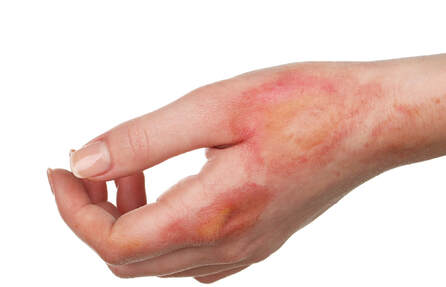Vitamin D may expedite wound healing in burn patients

USA: Vitamin D is a hormone with pleiotropic effects. Besides its role in maintaining bone mineral homeostasis and calcium uptake it also plays an important role in maintaining endocrine, cardiovascular and immune functions. Now, a new study published in the journal Burns has demonstrated the benefit of vitamin D in patients with burn injuries. The study found that vitamin D may promote wound healing and immune regulation in such patients aiding in speedy recovery from the burn injury. Low 25(OH)D has been observed in nearly all pediatric and most adult burn patients. Megan A.Rech, Department of Pharmacy, Loyola University Medical Center, United States, and colleagues summarized literature surrounding vitamin D as it relates to burn-injured patients, including vitamin D homeostasis, serum concentrations, and literature evaluating supplementation in both adult and pediatric patient population
“Defining adequate, insufficient and deficient levels of vitamin D is still controversial. Based on the Institute of Medicine, patients with serum 25(OH)D <12 ng/mL (<30 nmol/L) have increased risk of developing rickets or osteomalacia. Those with levels between 12–20 ng/mL (30– 50 nmol/L) have insufficient levels and >20 ng/mL (>50 nmol/L) are considered to have adequate levels,” note the authors. “While a good predictor of vitamin D status in the general population, 25(OH)D has been found to be less accurate in critically ill patients, especially burn patients, due to variances between assays, acute fluid shifts, and alterations and polymorphisms in vitamin D binding protein (DBP) and albumin, they write.
Although vitamin D studies in burn patients have primarily been amongst the pediatric population, the benefit of vitamin D supplementation is based upon the correlation between vitamin D levels and bone marker measurements, with the goal of preventing future bone fractures. “Though limited data exists in pediatric and adult burn patients, sufficient vitamin D concentrations and supplementation of vitamin D are a lowcost, low-risk intervention that may be of benefit, particularly in preventing fractures and impacting clinical outcomes such as reduced length of stay. Further research should focus on determining optimal monitoring strategies, supplementation regimens and clinical outcomes like mortality, LOS and incidence of sepsis,” concluded the authors.
https://speciality.medicaldialogues.in/vitamin-d-may-expedite-wound-healing-in-burn-patients/
“Defining adequate, insufficient and deficient levels of vitamin D is still controversial. Based on the Institute of Medicine, patients with serum 25(OH)D <12 ng/mL (<30 nmol/L) have increased risk of developing rickets or osteomalacia. Those with levels between 12–20 ng/mL (30– 50 nmol/L) have insufficient levels and >20 ng/mL (>50 nmol/L) are considered to have adequate levels,” note the authors. “While a good predictor of vitamin D status in the general population, 25(OH)D has been found to be less accurate in critically ill patients, especially burn patients, due to variances between assays, acute fluid shifts, and alterations and polymorphisms in vitamin D binding protein (DBP) and albumin, they write.
Although vitamin D studies in burn patients have primarily been amongst the pediatric population, the benefit of vitamin D supplementation is based upon the correlation between vitamin D levels and bone marker measurements, with the goal of preventing future bone fractures. “Though limited data exists in pediatric and adult burn patients, sufficient vitamin D concentrations and supplementation of vitamin D are a lowcost, low-risk intervention that may be of benefit, particularly in preventing fractures and impacting clinical outcomes such as reduced length of stay. Further research should focus on determining optimal monitoring strategies, supplementation regimens and clinical outcomes like mortality, LOS and incidence of sepsis,” concluded the authors.
https://speciality.medicaldialogues.in/vitamin-d-may-expedite-wound-healing-in-burn-patients/
